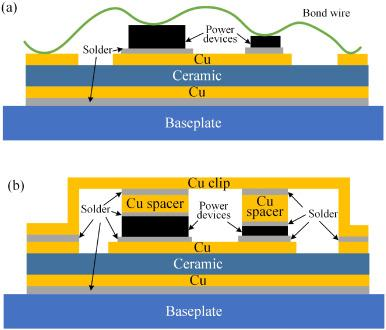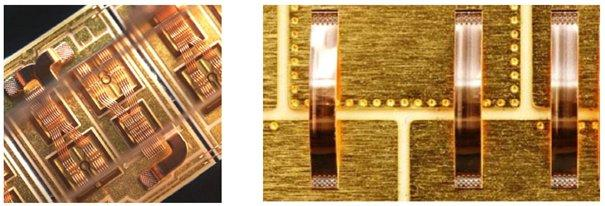Power chips are connected to outside circuits with product packaging, and their performance relies on the assistance of the product packaging. In high-power scenarios, power chips are usually packaged as power components. Chip interconnection describes the electric connection on the upper surface of the chip, which is generally light weight aluminum bonding cable in conventional components. ^
Standard power component package cross-section
Currently, commercial silicon carbide power components still primarily make use of the packaging innovation of this wire-bonded conventional silicon IGBT component. They face troubles such as huge high-frequency parasitical parameters, not enough warm dissipation capacity, low-temperature resistance, and not enough insulation stamina, which limit making use of silicon carbide semiconductors. The screen of exceptional efficiency. In order to fix these problems and fully exploit the big possible advantages of silicon carbide chips, several new packaging modern technologies and solutions for silicon carbide power modules have emerged in the last few years.
Silicon carbide power component bonding technique
(Figure (a) Wire bonding and (b) Cu Clip power module structure diagram (left) copper wire and (right) copper strip connection process)
Bonding products have actually established from gold cable bonding in 2001 to light weight aluminum wire (tape) bonding in 2006, copper cable bonding in 2011, and Cu Clip bonding in 2016. Low-power devices have actually established from gold cables to copper cords, and the driving pressure is expense reduction; high-power devices have actually developed from light weight aluminum cords (strips) to Cu Clips, and the driving pressure is to enhance product efficiency. The higher the power, the higher the requirements.
Cu Clip is copper strip, copper sheet. Clip Bond, or strip bonding, is a packaging process that uses a solid copper bridge soldered to solder to connect chips and pins. Compared with standard bonding product packaging approaches, Cu Clip innovation has the following benefits:
1. The link in between the chip and the pins is made from copper sheets, which, to a certain degree, changes the common wire bonding technique between the chip and the pins. As a result, an unique plan resistance worth, greater current flow, and far better thermal conductivity can be gotten.
2. The lead pin welding area does not need to be silver-plated, which can totally conserve the cost of silver plating and bad silver plating.
3. The item look is entirely constant with regular items and is generally used in web servers, mobile computer systems, batteries/drives, graphics cards, motors, power materials, and various other areas.
Cu Clip has 2 bonding methods.
All copper sheet bonding approach
Both eviction pad and the Source pad are clip-based. This bonding technique is much more costly and complex, yet it can achieve better Rdson and far better thermal results.
( copper strip)
Copper sheet plus cable bonding method
The resource pad makes use of a Clip approach, and the Gate utilizes a Cable technique. This bonding technique is a little less costly than the all-copper bonding method, saving wafer area (suitable to really small gate locations). The procedure is less complex than the all-copper bonding method and can obtain much better Rdson and far better thermal effect.
Provider of Copper Strip
TRUNNANO is a supplier of surfactant with over 12 years experience in nano-building energy conservation and nanotechnology development. It accepts payment via Credit Card, T/T, West Union and Paypal. Trunnano will ship the goods to customers overseas through FedEx, DHL, by air, or by sea. If you are finding bright copper price, please feel free to contact us and send an inquiry.
Inquiry us






